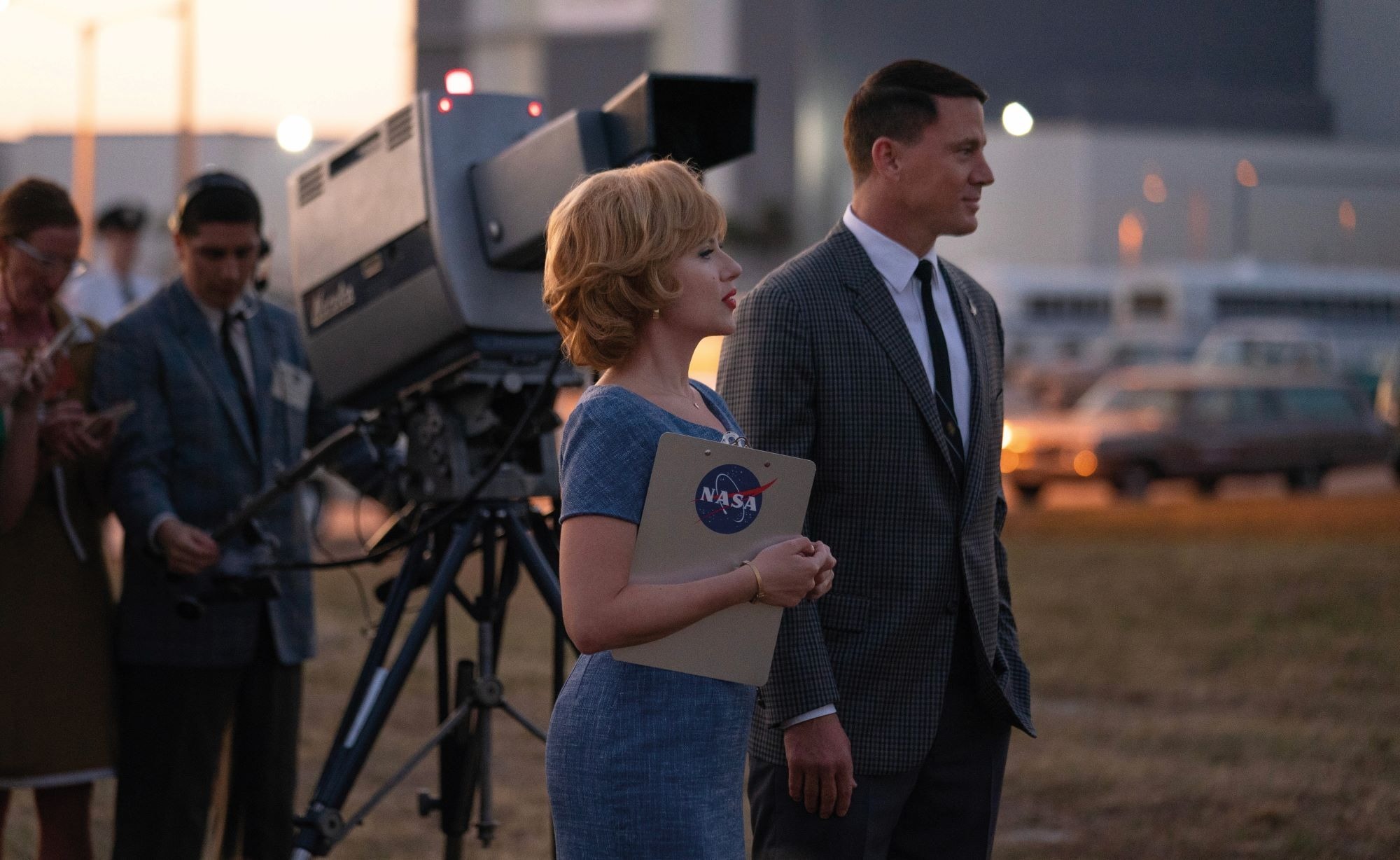Review: The movie offers a twist on the story of Apollo 11 – but stays true to the science

You might feel like you know all about the 1969 Moon landing. Most of us have grown up with tales of the space race, from books to movies to music – and of course Frank Sinatra’s love song, closely associated with the Nasa missions and still an enduring classic. A new film from Columbia Pictures, however, brings a fresh take to Apollo 11 by drawing from both the real and fake versions of the story. Fly Me to the Moon, starring Channing Tatum and Scarlett Johansson, charts the well-trodden history of putting the first men on the Moon, but also offers a fictional romp about how the US tried to fake the Moon landing, with an endearing rom-com throughline to tie it all together.
This quasi-historical romantic drama, which came out in July, begins after the tragic fire that killed the Apollo 1 astronaut crew in 1967. By this point in the space race, both the United States and Russia had maintained their space programmes for a decade and successfully sent humans to outer space and back.
The US, still reeling from President John F. Kennedy’s assassination in 1963, was desperately trying to beat Russia to the Moon. Famous Apollo astronauts appear (Neil Armstrong, Buzz Aldrin and the like) while Tatum plays a Nasa launch director named Cole Davis, loosely inspired by his real life equivalent, Gene Kranz.
Kranz led multiple missions in the Apollo programme including Apollo 1, which never made it off the ground. The responsibility for the deaths of Apollo 1 astronauts Gus Grissom, Ed White and Roger Chaffee weighed heavily on Kranz, as described in his memoir. In the film, Davis carries this same burden, and his need to honour the memory of these men drives him single-mindedly forward in pursuit of a successful Moon landing.
Scarlett Johansson’s character Kelly Jones, on the other hand, is an entirely fictional ad executive hired to overhaul Nasa’s PR. Although the real-life Nasa had a media department and substantial safety protocols from its inception, the movie’s version of the agency is a bit more dramatic. Nasa is portrayed as a slapdash operation, running out of money and so focused on achieving their mission that safety and public perception fall by the wayside.
Our romantic leads first meet in a diner, where neither knows the other’s profession and Cole proclaims that Kelly is the most beautiful woman he’s ever seen. But at Kennedy Space Center the two predictably clash. Kelly wants to do whatever is necessary to sell the space programme to the American public, while Cole thinks advertising is a waste of the mission team’s valuable time and an affront to the purity of their scientific endeavours.
This tension heightens when Kelly successfully lobbies to put a camera on the Apollo 11 lunar lander, with support from a mysterious government operative – Moe Berkus, played by Woody Harrelson – sent by President Nixon himself. (This is another of the film’s fictions. Cameras were quite common in the Apollo era, as astronauts wanted to capture magnificent views like the famous Earthrise. The first video broadcast from space was from the earlier Apollo 7.)
Eventually, the two begin to find a way to compromise. But here is where the film shoots off from the realm of reality. Berkus steps in and insists that Kelly take on a secret project: the US government can’t risk a major failure in a live broadcast, so she must stage a fake Moon landing to show the public instead. (In a clever sort of Easter egg, this fake broadcast is referred to as “Project Artemis” – a name now used for Nasa’s real life return to the Moon in the 2020s, of which the first mission has already flown.) Kelly must keep the secret from everyone – including Cole.
Moon landing conspiracy theories have been popular for decades, even though each supposed line of evidence has been thoroughly debunked. For example, conspiracists often suggest that the American flag planted on the Moon shouldn’t look like it’s flying, because there’s no wind on an atmosphere-less rock. Nasa really thought of everything, though – there’s a rod at the top of the flag to keep it from falling straight down on the flagpole, and the crumpling is simply from its jam-packed journey. As for why humans haven’t been back to the Moon since 1972 (if we’re so obviously capable of it), national priorities simply changed, with the Vietnam War taking centre stage in American politics and the space race winding down. Nasa instead began work on the Space Shuttle programme and the International Space Station, establishing a more long-term human presence in orbit around Earth.
The film’s fake landing project led by Kelly, happening in parallel with the real Nasa mission led by Cole, sets up an interesting tension between not only the protagonists, but also the broader roles of Nasa and the US government. The plot positions Cole and Nasa as the good guys, solely invested in the honourable pursuit of science and truth. Meanwhile, the broader US government is the villain, hungry for power and willing to lie to get what they want, with Kelly trapped in the web of their corruption.
This narrative plays into the all-too-common pedestalling of science as objective and infallible, removed from the messiness of human affairs, and of space as a utopia. But the space race really was fundamentally about power – Nasa’s founding story would be quite different without the geopolitical competition with Russia spurring US leadership to invest so heavily in space exploration. Some United Nations treaties did codify ideals of international cooperation in the 1960s, such as the Outer Space Treaty, but even today, nearly half a century later, the debate over who can lay claim to space rages on.
There is a certain appeal, though, to the film’s simple picture of Nasa as a force for good. Despite the complexities and politics of space exploration, Nasa and other space agencies around the world have inspired countless people with their gorgeous imagery of the cosmos and incredible feats of engineering. Kelly, of course, realises the immorality of deceiving the American public in the end. And we know from history that Apollo 11 was successful and the Moon landing footage was real, providing a guarantee of a happy ending.
Along with the witty fictional turn and spot-on comedic timing, the scientific detail of the film is impeccable, with plenty of fun facts about Nasa and the mission interjected along the way. The Vehicle Assembly Building at Kennedy Space Center is, as the film says, the tallest single-storey building in the world, and the humongous crawler-transporter they show moving a rocket to the launch pad is true to life, inching along at a glacial 1.6 kilometres per hour. It’s also true, as they say, that the average age of Nasa employees during Apollo 11 was only 28 (now it’s more like 40) and that there were many women involved. While there was no Kelly Jones, women such as the computer scientist Margaret Hamilton were key to Nasa’s success.
Overall, Fly Me to the Moon is a satisfying watch – the kind of heartfelt drama that keeps you on your toes, but safe in the knowledge that it will all turn out okay in the end. Kelly and Cole’s romance is complicated and delicate, two people accepting their imperfections and trying to grow. And, as always, the grand challenge of the Moon landing is an inspiring and timely reminder that we live in an immense universe, full of possibility, and that we can achieve wondrous feats as long as we work together.
This article is from New Humanist’s autumn 2024 issue. Subscribe now.

